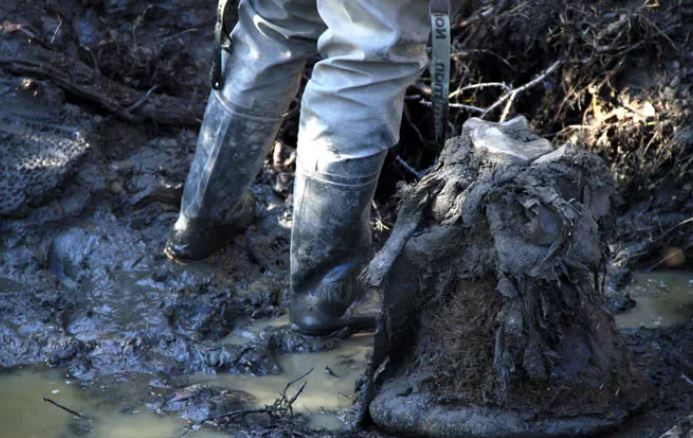Woolly Mammoth’s Genetic Time Capsule: A Glimpse into the Pleistocene
In a scientific breakthrough that reads like a page from a science fiction novel, researchers have unlocked the secrets of a 52,000-year-old woolly mammoth’s DNA. The extraordinary preservation of this ancient genetic material, found in the Siberian permafrost, has allowed scientists to peer into the genetic machinery of this extinct species with unprecedented detail.
Chromoglass: Nature’s Genetic Preservation Miracle
The key to this astonishing discovery lies in a unique phenomenon known as “chromoglass.” This glassy state of DNA, resulting from the rapid freeze-drying of the mammoth’s remains, preserved the three-dimensional structure of its chromosomes, a feat previously thought impossible for ancient DNA. This remarkable find offers scientists a window into the mammoth’s active genes, revealing insights into its biology, behavior, and evolutionary history.
Unraveling the Genetic Tapestry: PaleoHi-C to the Rescue
To unlock the mammoth’s genetic secrets, scientists had to overcome the challenges posed by degraded DNA fragments. They achieved this by adapting a technique called Hi-C, typically used on fresh samples, to work with ancient DNA. This modified technique, dubbed PaleoHi-C, allowed them to reconstruct the mammoth’s chromosomes and identify which genes were active before its demise.
Beyond the Double Helix: Insights into Gene Activity and Function
The researchers’ analysis revealed a fascinating genetic landscape, with 425 genes active in mammoths but not in their modern relatives, the elephants. These genes, including one called Egfr, which regulates hair growth, offer clues about the mammoth’s unique adaptations, such as its shaggy coat and thick eyelashes. This groundbreaking research opens up the possibility of studying gene activity in other extinct species, providing valuable insights into their physiology and behavior.
The Resilience of Chromoglass: A New Frontier for Ancient DNA Research
The discovery of chromoglass and its remarkable preservation properties has profound implications for the field of paleogenomics. By preserving DNA in a glass-like state, chromoglass offers a new avenue for studying ancient organisms, potentially unlocking the secrets of long-extinct species. Researchers are already exploring the possibility of applying PaleoHi-C to other well-preserved specimens, such as mummified animals and frozen remains, to glean further insights into the evolution of life on Earth.
Key Takeaways:
| Key Point | Description |
|---|---|
| Chromoglass preserves 3D structure of ancient DNA. | This allows for the reconstruction of chromosomes and analysis of gene activity in extinct species. |
| Woolly mammoth had 28 pairs of chromosomes. | This is the same number as modern elephants. |
| PaleoHi-C enables the study of ancient DNA. | This modified technique allows researchers to analyze degraded DNA fragments. |
| Gene activity can provide insights into extinct species. | This opens up new avenues for understanding the biology and behavior of ancient organisms. |
| Chromoglass may be found in other well-preserved specimens. | This could lead to further discoveries about extinct species and their evolutionary history. |
Summary: The remarkable preservation of a woolly mammoth’s DNA in a glass-like state, known as chromoglass, has opened up a new frontier in the study of ancient life. Researchers have successfully reconstructed the mammoth’s chromosomes and identified active genes, providing valuable insights into this extinct species. This breakthrough holds the potential to revolutionize our understanding of evolution and extinction, and to shed light on the genetic makeup of other ancient organisms.

Sunil Garnayak is an expert in Indian news with extensive knowledge of the nation’s political, social, and economic landscape and international relations. With years of experience in journalism, Sunil delivers in-depth analysis and accurate reporting that keeps readers informed about the latest developments in India. His commitment to factual accuracy and nuanced storytelling ensures that his articles provide valuable insights into the country’s most pressing issues.



